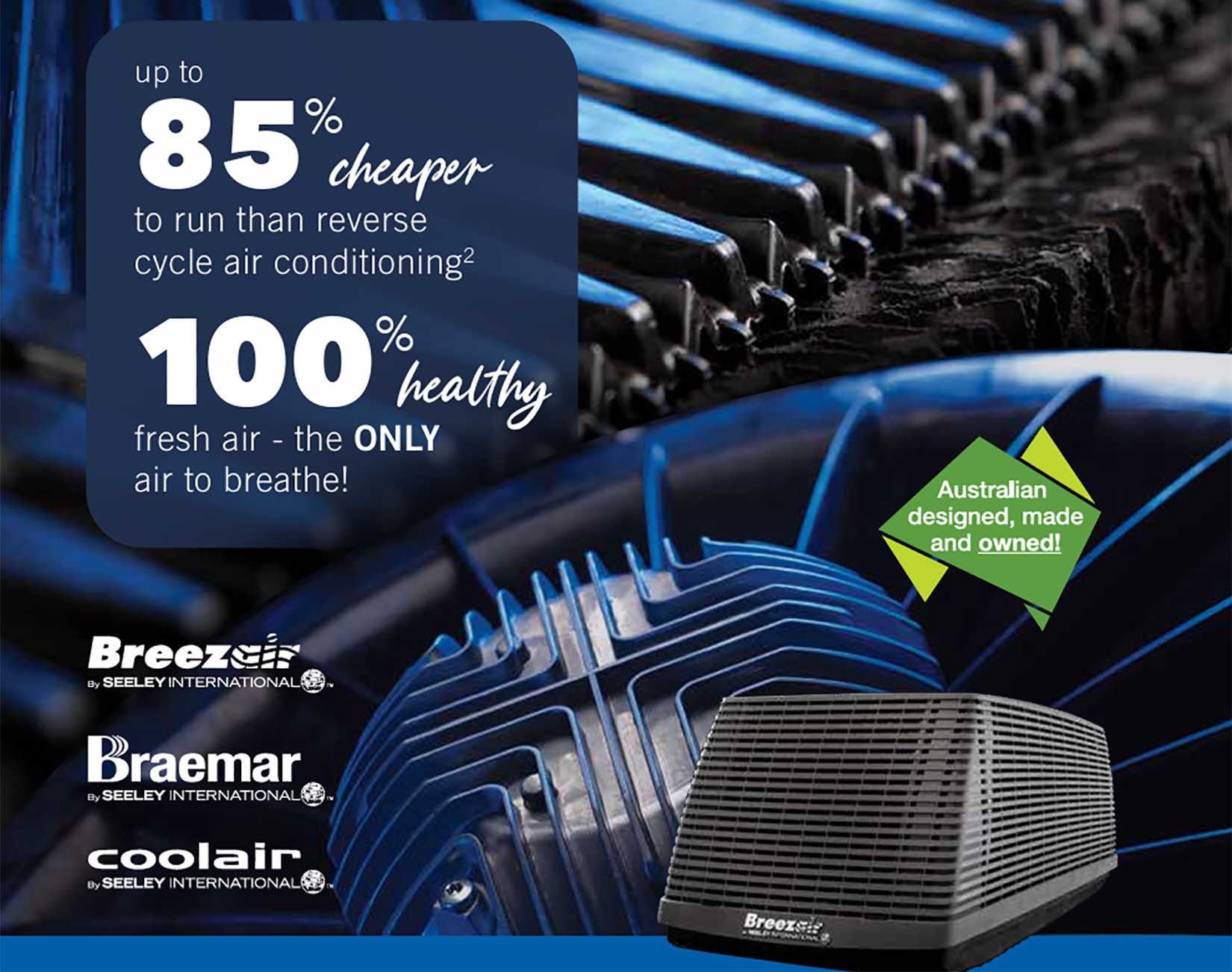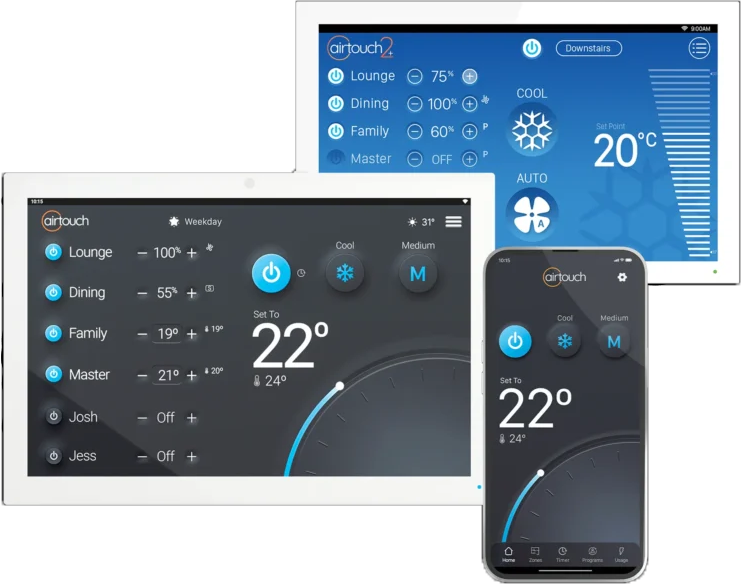
Customers often ask; ‘what is the difference between Evaporative Cooling Vs Reverse Cycle Air conditioning?’
In this video, Holly from Jarrahdale Heating & Cooling provides an overview of Evaporative and Reverse Cycle, and explain some of the main differences, to help you select the best system for your home.
First, lets take a look at Evaporative Cooling
A Ducted Evaporative Cooling system includes a rooftop unit and ducting that is connected to the system and pushes air throughout the home via ceiling vents.
Evaporative cooling is particularly suited to hot, dry climates with low humidity. When conditions are optimal, a good evaporative cooling system should be able to reduce the temperature in your home by up to 10 degrees. But, this really depends on the level of humidity outside. This is because an evaporative cooler works by drawing hot, external air over wet pads in the rooftop unit. This humidified, cool air is then distributed into your home, and warm air is pushed out through open doors and windows. To ensure a continuous flow of cool air, it is important to have your doors and windows partially opened while the evaporative system is operating.
One of the key advantages of evaporative cooling is that the system always draws in new, outside air to be cooled and pushed down into the home. As long as external conditions are optimal, this allows for a continuous flow of fresh, cool air.
Evaporative cooling is also cheaper to purchase and has lower operating costs compared to reverse cycle. In fact, you could expect to pay up to 80% less to run an efficient evaporative system.

The downside of evaporative cooling is that although they are cheaper to run, external conditions are a key factor in how well the system operates. On hot, humid summer days your evaporative system will still reduce the indoor temperature but may struggle to keep the temperature optimal.
It’s also important to note that evaporative systems offer cooling only. You will also require a separate source of heating for your home, such as a wood or gas heater.
Now, lets compare this to Reverse Cycle Air Conditioning.
Reverse Cycle Air-conditioning systems include an outdoor unit, indoor unit and a thermostat that measures the temperature in the room. Ducted systems also include ducting, located inside the roof space, and ceiling vents. For cooling a single room or zone in the home, wall split units are also available.
A reverse cycle system works via a compressor in the outdoor unit that pumps refrigerant to an indoor coil and either warms the coil up, or cools it down, depending on if the system is in heating or cooling mode. As the fan draws the air in through the return air grille, it is filtered, drawn into the unit through the coil, then distributed through the outlets into your home. Once the system reaches desired temperature, the compressor will automatically slow down systems, and increase them as needed, to continuously maintain the desired temperature.
This allows a reverse-cycle system to offer a consistent temperature, independent of ambient conditions, and is a key advantage of reverse cycle air-conditioning.
Because of this precision temperature control, reverse cycle systems can also be zoned. This means different rooms can be set to different air flows at the same time, to suit the preferences of occupants.
Another important advantage is the ability of reverse-cycle to offer both heating and cooling modes, meaning you can rely on the one system for year-round comfort.

However, unlike evaporative cooling, reverse-cycle air-conditioning does require that all doors and windows are closed for optimal performance. This is because once the air is drawn in, it is continuously recirculated through the system in order to maintain the same temperature.
The cost of reverse cycle is another consideration. A Ducted Reverse cycle system is more expensive than a ducted evaporative system, both to purchase and operate.
In summary, the important take aways are:
- Both ducted evaporative cooling and ducted reverse cycle will cool your entire home, but only reverse cycle also offers heating.
- Evaporative Cooling works well in hot and dry climates but is not as effective when it is humid. This is because the system works by increasing humidity in your home via a process of water evaporation.
- Reverse cycle air conditioning reaches the desired indoor temperature regardless of external conditions but is more expensive to purchase and run.
- If you already have an excellent source of heating in your home and are looking for an economical cooling option that offers adequate cooling in most conditions, then you may wish to consider evaporative cooling. Evaporative cooling is also ideal if you are sensitive to pollens, dust or other allergens as it provides a continuous flow of fresh air.
- If you need a system that offers the flexibility of both heating and cooling, and you want to control the internal temperature more precisely, then reverse cycle air conditioning is an excellent option.
For more information about reverse cycle and evaporative cooling options, call in to Jarrahdale Heating and Cooling during showroom hours or contact us..
